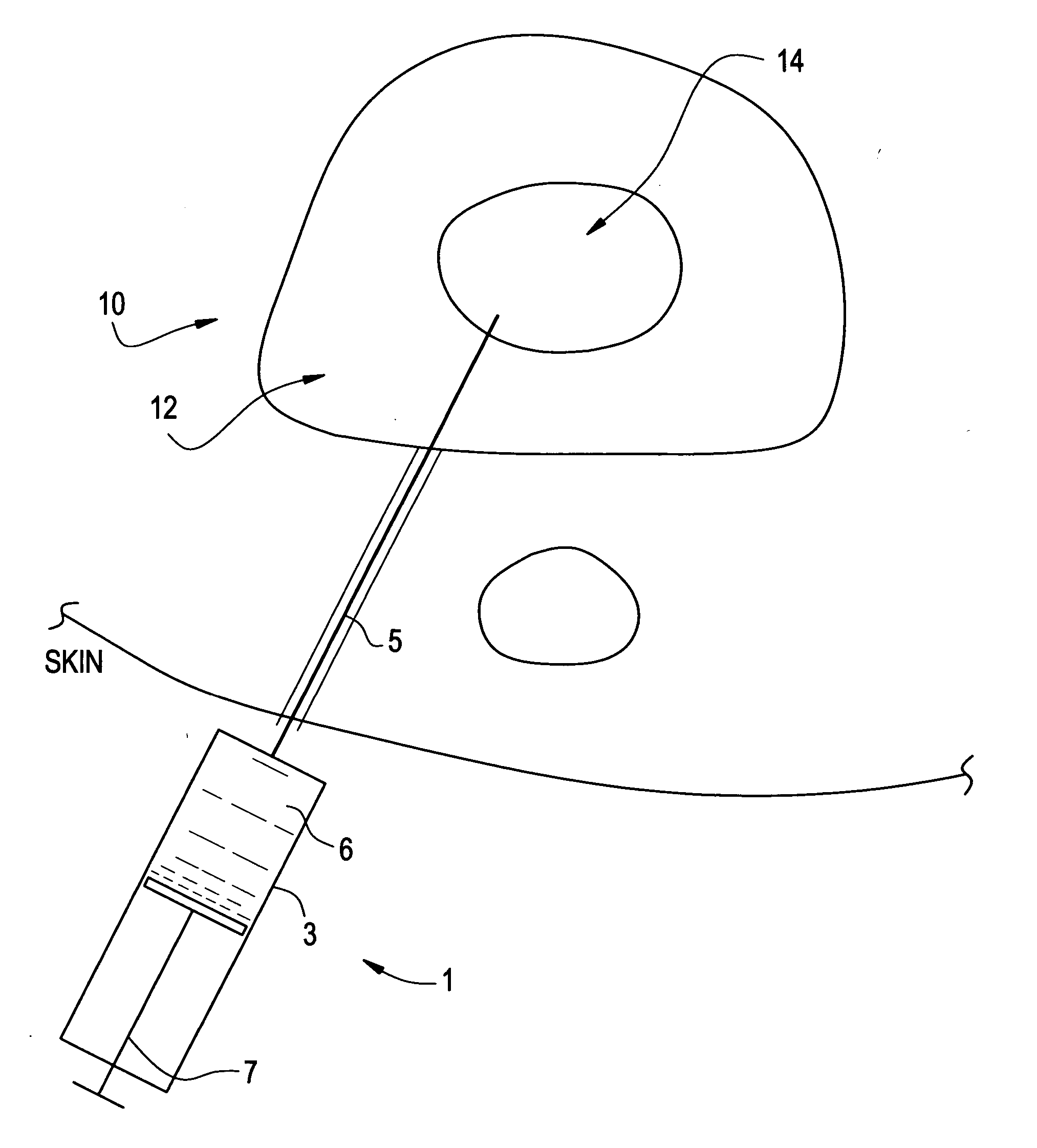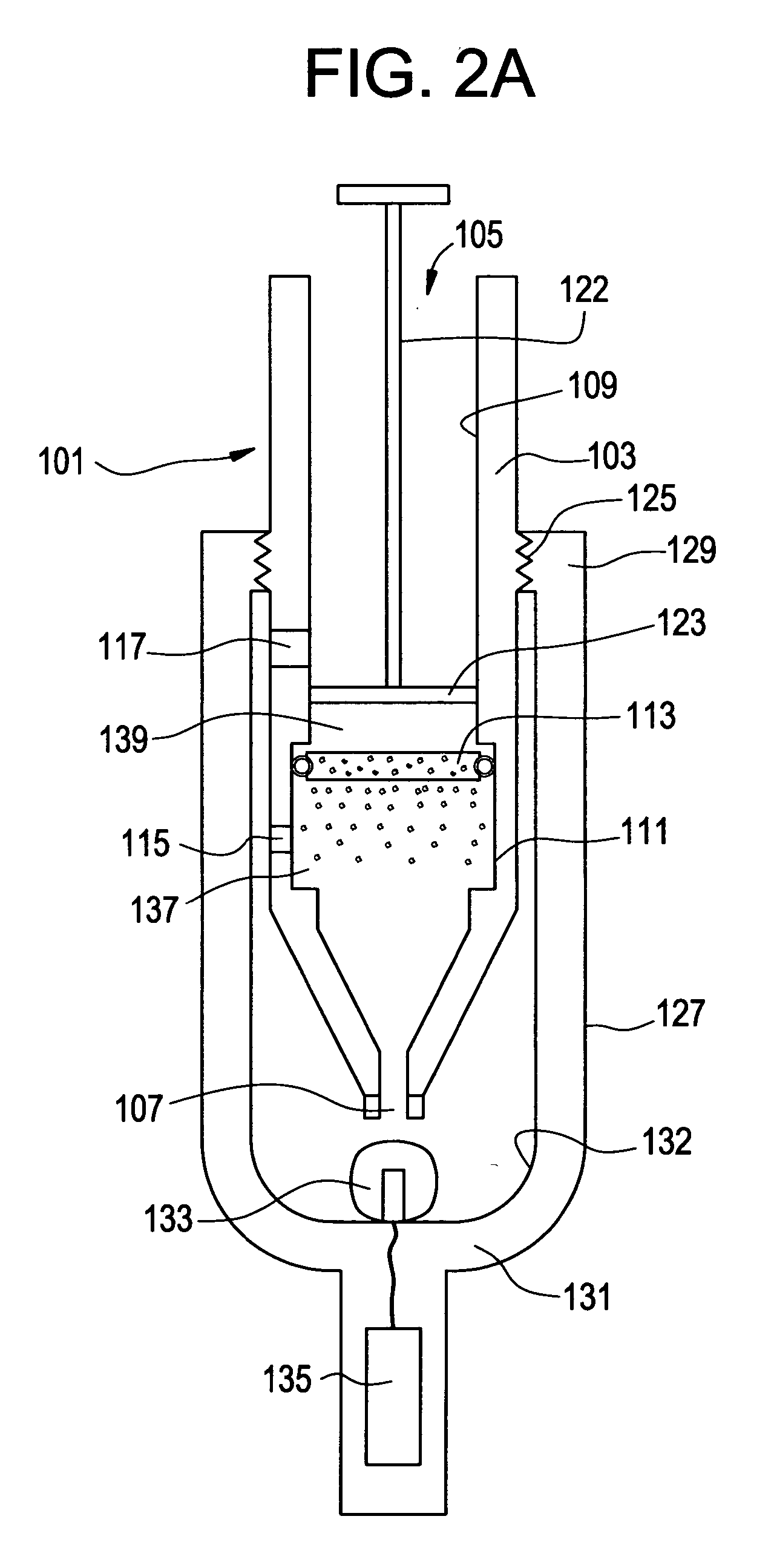Ultra violet therapies for spine-related pain
a technology of ultra violet and spine, applied in the field of ultra violet therapies for spine related pain, can solve the problems of nerve irritation and pain, retard the flow of nutrients into the disc, retard the flow of waste products out of the disc, and the cells within the nucleus pulposus to emit toxic amounts of cytokines and mmps, etc., to achieve the effect of effective treatment, suppressing pro-inflammatory (th1) cells, and enhancing resorption of the herniated nu
- Summary
- Abstract
- Description
- Claims
- Application Information
AI Technical Summary
Benefits of technology
Problems solved by technology
Method used
Image
Examples
Embodiment Construction
[0087] In the first aspect of this invention an effective amount of anti-inflammatory cytokine IL-10 is injected into a degenerating disc. Now referring to FIG. 1, there is provided a syringe 1 having a barrel 3 containing a formulation 6 comprising an effective amount of IL-10. A needle 5 extends from the syringe through annulus fibrosus 12 into a nucleus pulposus region 14 of a patient's disc 10. When plunger 7 is depressed, the IL-10 formulation is injected into the nucleus pulposus 14.
[0088] Preferably, the injection provides an in vivo IL-10 concentration of at least 0.1 ng / ml, more preferably at least 1 ng / ml, more preferably at least 10 ng / ml.
[0089] Preferably, the injection volume is between 0.1 and 1 cc. Preferably, the IL-10 concentration in the injection is at least 0.1 ng / ml, more preferably at least 1 ng / ml, more preferably at least 10 ng / ml.
[0090] Now referring to FIG. 2a, there is provided a syringe 101 adapted for inducing and delivering viable cells of the presen...
PUM
| Property | Measurement | Unit |
|---|---|---|
| concentration | aaaaa | aaaaa |
| concentration | aaaaa | aaaaa |
| concentration | aaaaa | aaaaa |
Abstract
Description
Claims
Application Information
 Login to View More
Login to View More - R&D
- Intellectual Property
- Life Sciences
- Materials
- Tech Scout
- Unparalleled Data Quality
- Higher Quality Content
- 60% Fewer Hallucinations
Browse by: Latest US Patents, China's latest patents, Technical Efficacy Thesaurus, Application Domain, Technology Topic, Popular Technical Reports.
© 2025 PatSnap. All rights reserved.Legal|Privacy policy|Modern Slavery Act Transparency Statement|Sitemap|About US| Contact US: help@patsnap.com



